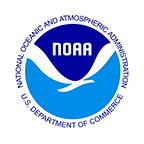
Marine debris is a global problem that impacts marine life, damages habitat, impedes navigation, impacts our economy, and is a risk to human health and safety. The March 11, 2011 Japanese earthquake and tsunami amplified the existing marine debris problem with the input of an estimated 1.5 million tons of debris, some of which continues to float toward U.S. shorelines along the Northeast Pacific Ocean today. This devastating event and subsequent impacts have become the focus of research and coordination among various levels of government to answer important questions surrounding when, where, and with what impacts will debris hit our shores. In July, 2012 GFNMS, in partnership with the Greater Farallones Association, joined the NOAA Marine Debris Monitoring and Assessment Project (MD-MAP) Program. In association with NOAA's Office of Response and Restoration, Marine Debris Program, the pilot program hopes to apply data results and analysis to identify targets for mitigation and measure effectiveness of existing marine debris prevention efforts. Additionally, participation in the program establishes a first ever baseline of data on marine debris along sanctuary shores.
Our participation in this program engages citizen-scientists to use NOAA designed survey protocol for standing stock and accumulation surveys to gather information on debris types, abundances, and distribution on beaches. GFNMS is part of a network of government, academic, and non-profit partners joining the MD-MAP initiative from all five of the tsunami impacted states including California, Oregon, Washington, Alaska, and Hawaii. With several beach sites in California, six of which are managed by GFNMS, this program gathers important information from several locations along the California coast.

The marine debris program at GFNMS performs monthly surveys at six beach sites along the sanctuary coast. Trained citizen scientists conduct these surveys, recording important baseline data about the type, distribution, and abundance of marine debris on our shores.
Data collected from these surveys will have site-specific, regional, and national implications. Locally, site-specific baseline data will help target better locations and time periods for effective beach clean-up efforts, while minimizing wildlife and habitat disturbance. Regionally, these data will provide site-comparison analysis to better understand the scope of the marine debris problem within our sanctuary and along the West Coast. Nationally, data from these surveys will help determine the most efficient use of limited funding for prevention and mitigation efforts, which are critical for the development of sound national policy recommendations.
Preliminary findings from July, 2012 -April, 2015 surveys (4.2 MB PDF) show that between 65% - 80% of all debris recorded is plastic, namely hard plastic fragments, although treated lumber was also regularly present. As of June, 2015 a total of 144 surveys have been conducted, including 49 surveys from July, 2014 to June, 2015 alone.
Methodology
Two types of marine debris surveys are conducted through this program. Standing stock surveys are conducted at four locations and accumulation surveys are conducted at two locations. In order to help validate the documentation of debris resulting from marine rather than land-based sources, most specifically the Japanese tsunami, standing stock survey locations were selected based on remoteness from outflows such as drainage pipes and rivers or streams, and in areas away from recreational users. Accumulation survey locations considered proximity to the standing stock sites but did not require distance from recreational use and outflow locations and, therefore, tend to have a higher concentration of land based debris.
Each of the four standing stock locations consist of a one-hundred meter long plot, monitored every 28 days in a stratified random sample pattern so that 20% of the plot is assessed at each survey. Surveyors tally all debris over 2.5cm, within seven different categories: plastic, wood, glass, cloth/fabric, metal, and rubber, as well as unclassified, accompanied by photos and global positioning (GPS) locations. Debris items recorded on these surveys are not taken from the beach in order to provide information on the concentrations and persistence of debris on the shoreline, which is lost when debris is removed. In June, 2015 two accumulation survey sites were established. The accumulation sites also include a one-hundred meter long plot surveyed roughly every 28 days, although survey protocol monitors the entire plot and items over 2.5cm are recorded and removed from the beach. These sites provide important clean-up efforts that protect habitat and species health.
In addition to tracking possible debris resulting from the Japanese earthquake and tsunami, data from this program allows comparison and analysis of debris patters during seasons, interannual variations, broad scale ocean oscillations, and storm events. The program informs managers about the scope of the marine debris problem which can influence beach manageent decisions such as clean-up efforts, and protections for habitat and species. Comparing data between standing stock and accumulation surveys provide a more complete picture of debris deposition on local beaches and may inform changes to the design and implementation of future marine debris programs. All data from the six survey locations are compiled and entered into an online NOAA database for site specific analysis and comparison between other program sites. For partners or volunteers interested in setting up new survey sites visit the Get Started Toolbox. For additional information about the MD-MAP effort, email or visit the Marine Debris Program.
What if Debris is Hazardous or Toxic?
Because the majority of debris generated from the Japanese tsunami was cast offshore prior to the Fukushima nuclear power plant radiation leak, and the inundation zone covered a large area while the nuclear event occured at one location, it is thought that debris washing ashore will not be radioactive. Nevertheless, throughout the Pacific a number of debris items have been tested for radiation including items confirmed to have come from the tsunami. All surveyors have been trained to follow standardized procedures for contacting authorities in the event of potentially harmful debris that poses a threat to sanctuary waters or nearby beaches such as a large boat, Styrofoam, or wood pieces, as well as oil drums, propane tanks, and gas cans.
If you see a derelict vessel or other large debris item such as a shipping container contact your local authorities and notify the US Coast Guard Pacific Area Command at (510) 437-3710 or via VHF-FM Ch. 16 or 2182 MHz radio channels. If you see any potentially hazardous materials such as oil drums or propane tanks contact your local authorities and the National Response Center at 1-800-424-8802 to report the item.
What if Debris is Carrying Invasive Species?
On July 31st and August 1st, 2012 a Regional Preparedness and Response Workshop to Address Biofouling and Aquatic Invasive Species on Japanese Tsunami Marine Debris (JTMD) was held in Portland, Oregon. The workshop brought together marine debris and invasive species experts, managers, and communicators to develop response protocols for reducing the risk of aquatic invasive species associated with JTMD like those found on the 188-ton dock that washed ashore Agate Beach, Oregon on June 5th, 2012. On October 19th, 2012 the resulting document, Response Protocols for Biofouled Debris and Invasive Species Generated by the 2011 Japan Tsunami (1.5MB PDF) was released to the public. The document contains a framework for incident reporting, science-based protocols for risk assessment, and management options for responding to potential aquatic invasive species.
What if I find Potential Japanese Tsunami Marine Debris?
If you see debris on the beach that you think could be potential Japanese tsunami marine debris report it with as much information as possible including pictures, the time and location of the debris, and any identifying marks such as serial numbers or contact information. Throughout the program's three years, zero items habe been confirmed nor reported to NOAA via disasterdebris@noaa.gov as potential debris generated from the March, 2011 tsunami in Japan. If you think you see something, remember to stay safe and follow these general guidlines (330KB PDF) when reporting or handling all debris items.

 Greater Farallones National Marine Sanctuary
Greater Farallones National Marine Sanctuary